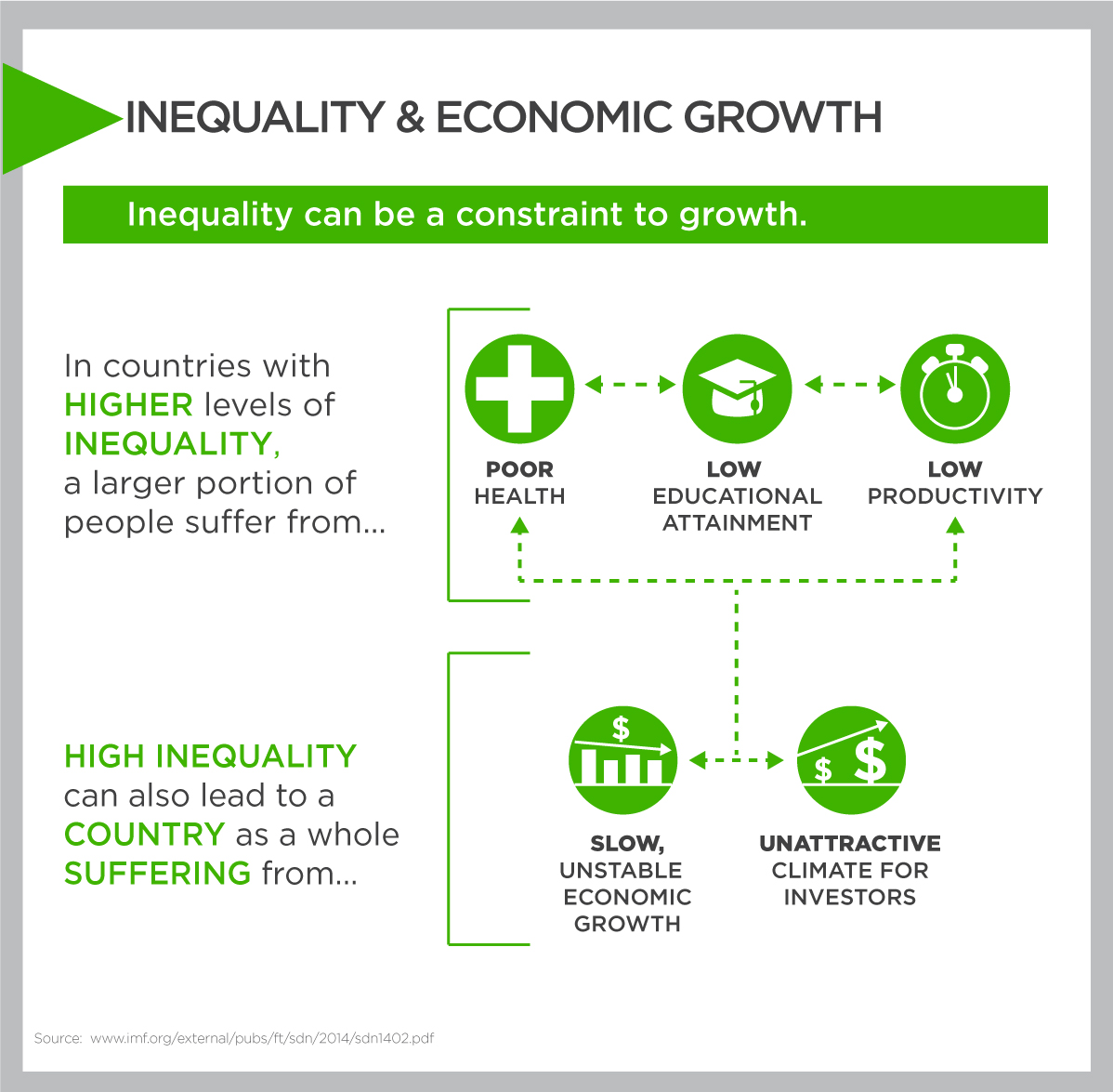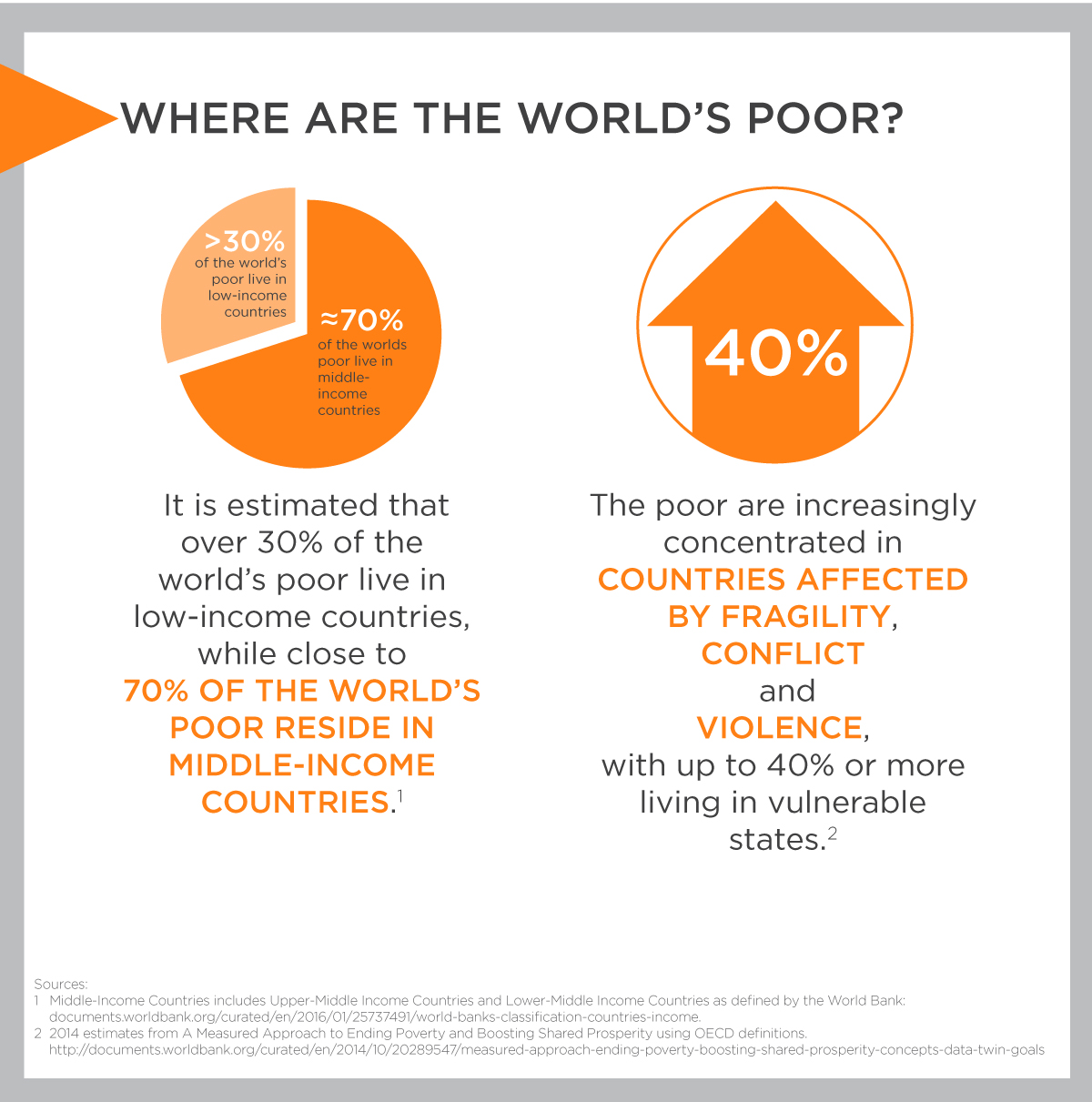The landscape of poverty and development has changed considerably since 2004:
- More inclusive growth leads to faster, more sustained growth.
-
Researchers have found evidence that high inequality is bad for growth.[[Ostry, J.D., Berg, A. and C.G. Tsangarides. “Redistribution, Inequality and Growth,” IMF Staff Discussion Note 14/02 (Washington, DC: International Monetary Fund, 2014).]] Research also shows disproportionate poverty reduction gains from reaching women[[Duflo, Esther. “Women Empowerment and Economic Development,” Journal of Economic Literature 50(4) (2012): 1051-1079.]] and marginalized populations[[World Bank. World Development Report 2007: Development and the Next Generation. (Washington, DC: World Bank, 2006).]].

- Regional integration has been a proven accelerator of growth and poverty reduction.
- There is clear evidence of sustained benefits from regional integration in East Asia.
- The geographic distribution of poverty is changing.
-
Currently, the largest numbers of poor live in marginalized pockets in middle income countries. Over time, poverty will increasingly be concentrated in fragile and conflict-affected states.

- For countries with high inequality, measuring poverty using average per capita incomes can obscure important information.
- Average income growth does not show the degree to which growth is shared by those at the bottom of the income distribution.
- Decentralization is a growing trend in many poor countries.
-
- Responsibility for delivery of public services and infrastructure is increasingly being devolved to local governments. More local control can improve accountability and resource allocation and create islands of success with demonstration effects.
- For poor countries with weak central governments, functioning local systems can help fill the governance vacuum.
- Private firms and private financial flows increasingly drive development as well as growth.
-
- Donor funds are not enough to meet infrastructure financing needs in developing countries. The private sector is a key player in funding, building, and managing infrastructure and the provision of social services.
- Private corporations are building shared value business models that target the poor as consumers and producers.
- Private investors searching for yield are willing to go to frontier markets.
- A growing class of private impact investors seeks both financial and social returns.
- Private capital and remittance flows dwarf official aid flows.
- Nontraditional donors are moving center stage as development actors.
- A number of private foundations and new emerging market donors are now development leaders.
- Governments have greater capacity to self-fund development.
- Domestic resource mobilization in low-income countries has quadrupled between 2002-2012, and many countries regard improving the efficiency of public investment as a key development priority.
- Technological innovations make it possible to reach, serve, and empower the poor.
- Examples include mobile phone technology, internet and broadband access, solar energy technology, nano- and mini-power and water grids, open data platforms, big data analysis, social networks, e-commerce, e-learning, and geospatial data tools.
- Innovations in development finance tools enhance accountability, attract private funders.
- Outcomes-based funding, crowdfunding platforms, and impact investment assets are examples of investment options offering opportunities to private actors with development interests.
- The climate change and poverty reduction agendas are converging.
- The poor and poor countries are on the front lines of climate change impact. Strategies for climate change mitigation/adaptation and poverty reduction are more complementary than conflicting.

